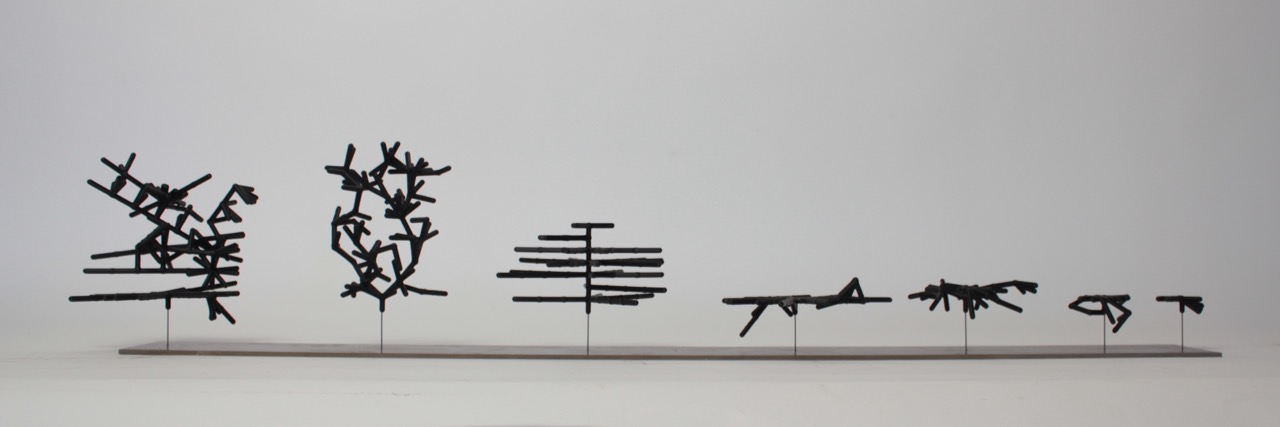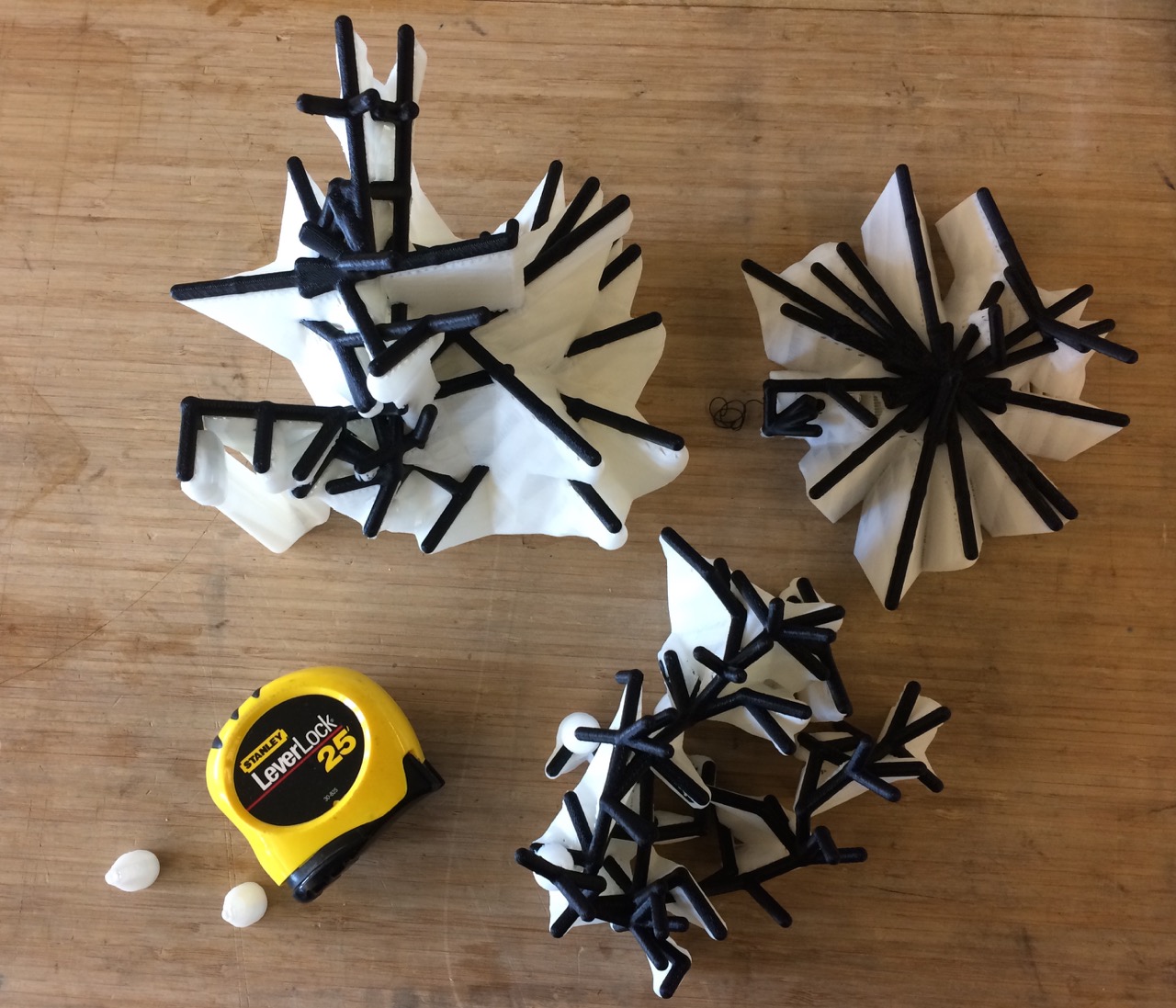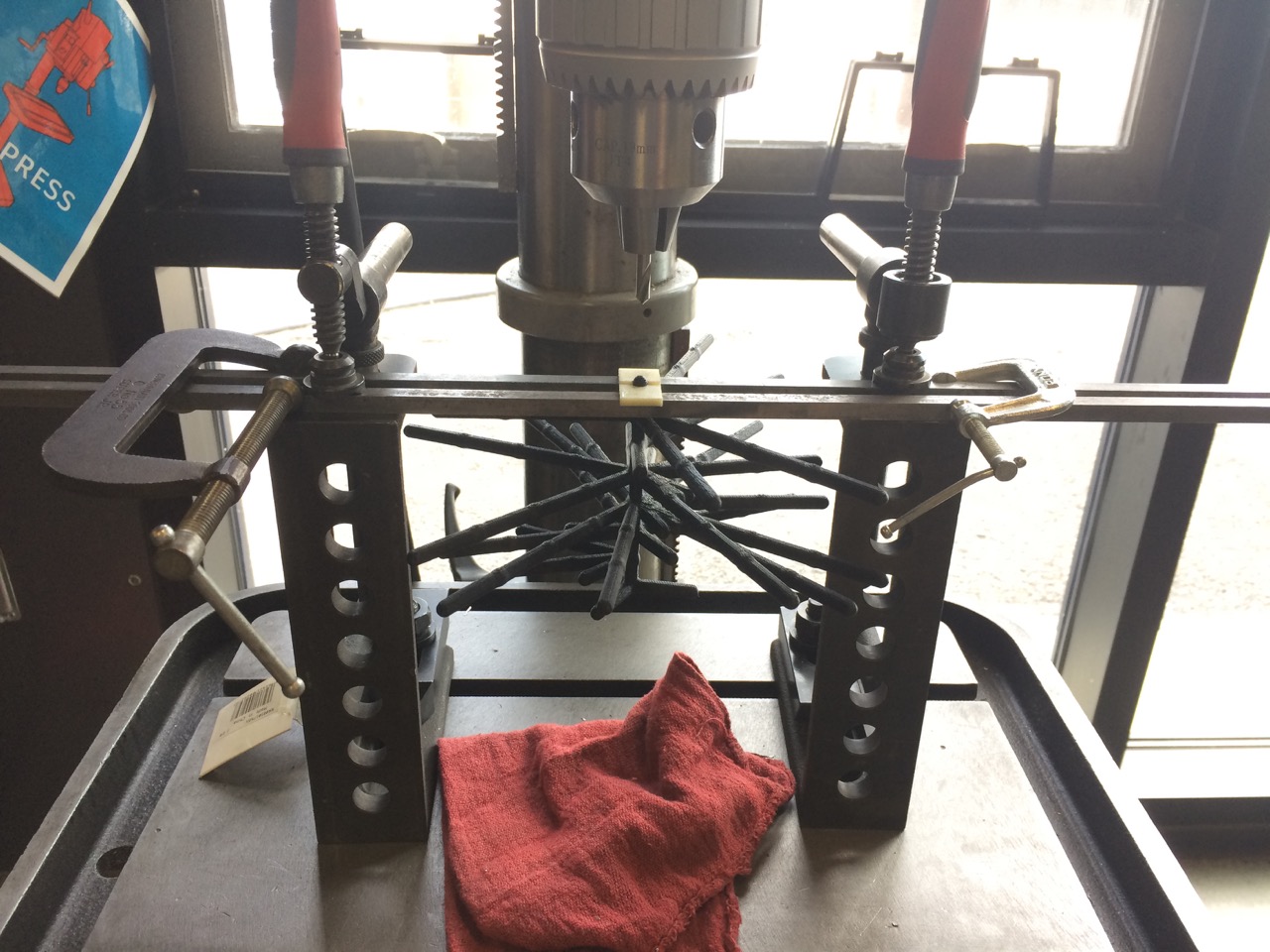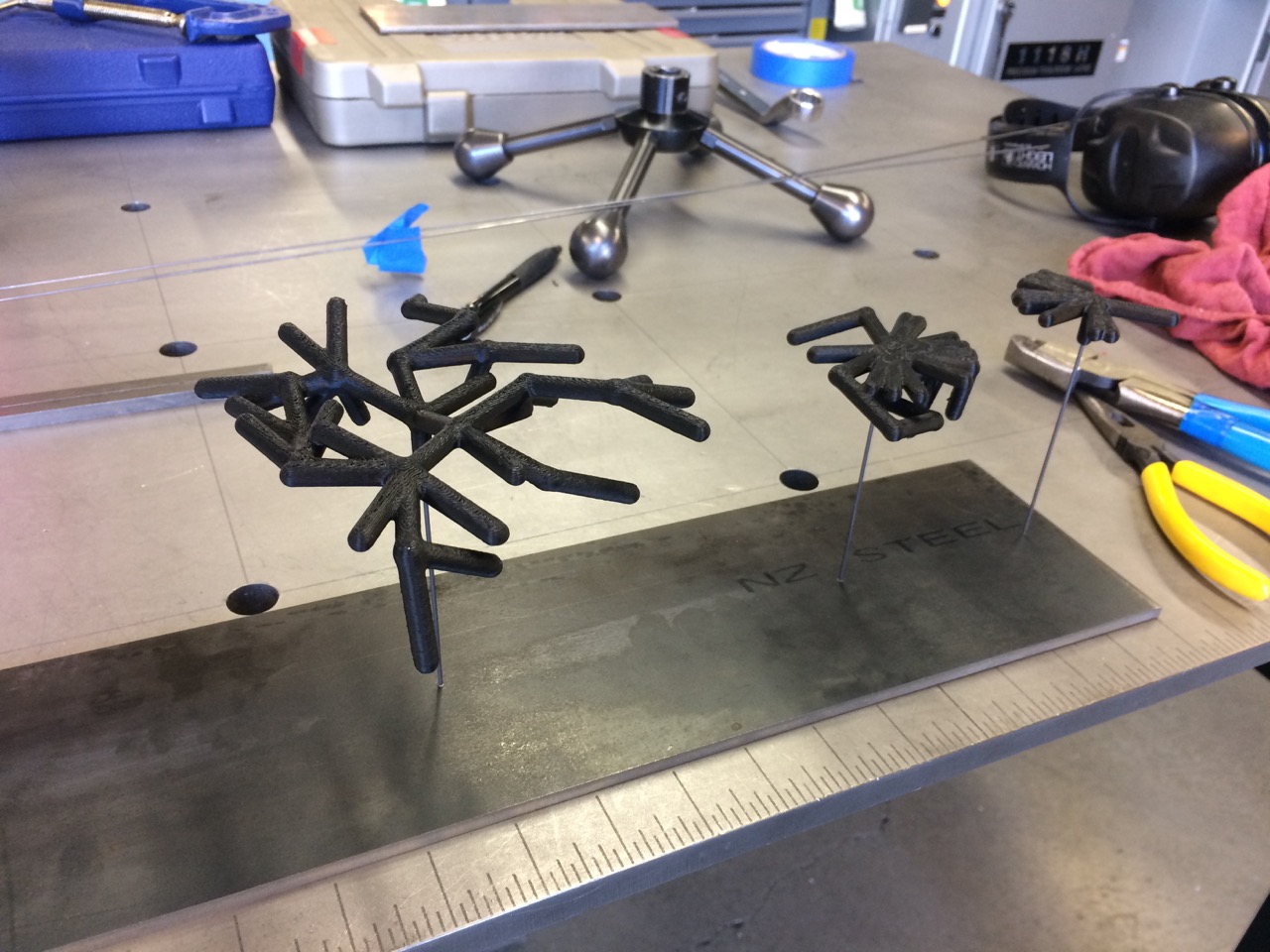Embodied Purpose Sculpture
Finished a sculpture!
 More photos of the finished piece are on my main website.
More photos of the finished piece are on my main website.
About the Algorithm
These are hand selected phenotypes from a final population of 80 individuals, after 40 generations of an evolution. The 80 individuals form a pareto-frontier for two objectives. The objectives are for 1) maximum number of nodes and 2) maximum average node ‘satisfaction’ at the end of 20 time-steps. Satisfaction or ‘fullness’ decreases 2 points everytime step and increases 5 points everytime a node eats. This may very well be an indication of the author’s own relationship with food.
The environment consisted of 60 nutrient spheres, in a 5 unit x 5 unit box. The box changed height as the structure grew. The spheres moved in a random walk, biased downwards very slightly.
Issues with Taking the Average
There are some issues with taking the average node-satisfaction score. One is rather ideological: taking the average satisfaction allows structures to be rewarded that have many under-nourished nodes, and a few highly nourished ones. To me this seems like an unfair way of assessing the health of a colony. I do not want to live in a society that asseses its health only by the average! That sounds like trickle-down economics. Blech. Of course in the context of an organism where each agent of the collective shares identical genetic information, as is the case in the instance, the averaging may have a different meaning. I think the following analogy might help.
Suppose each node in the colony can create ‘spores’ that will spawn the next colony. At the end of the life of the colony (in this case 20 time steps, arbitrarily) the satisfaction of the node determines how many spores it can make. The more spores created, the more likely a new colony forms. This would support selecting colonies by the sum of the satisfaction.
What is the average? Well it captures the ‘typical’ satisfaction score of the colony. Suppose, for some reason, only one node produces spores. Which node is determined by random chance. If the average satisfaction is high, it is more likely that the chosen node will produce many spores, and therefore have a high likelyhood of spawning a new colony. That seems to be the situation expressed in the above sculptures. Seems a bit convoluted to me. Are there any organisms that have such an arbitrary way of reproducing? If there were such organisms, they would be quickly clobbered by others that reproduce more effectively.
Besides the analogy sounding rather absurd, there is another issue, also related to the ideological one. The average says nothing about the spread of the satisfaction scores. This means that fit colonies might actually be quite ‘unfair’ or unequitable. Eep! Next time it might make sense to add another objective: low standard deviation of the satisfaction scores.
Here are some photos of the making:
 (Above) A few of the larger shapes just after 3d printing completed. These were printed on a Fortus450mc, thanks to pier9, where I am an instructor. The white material is dissolvable support. I chose to print using the Fortus for a few reasons. 1) The model-material is a tough plastic that is unlikely to crack. 2) The dissolvable support meant that I could print the rather complex shapes generated by colony-evolver without laboriously removing support.
(Above) A few of the larger shapes just after 3d printing completed. These were printed on a Fortus450mc, thanks to pier9, where I am an instructor. The white material is dissolvable support. I chose to print using the Fortus for a few reasons. 1) The model-material is a tough plastic that is unlikely to crack. 2) The dissolvable support meant that I could print the rather complex shapes generated by colony-evolver without laboriously removing support.
 Drilling a hole in one of the larger ‘colonies.’ There are two small, 3d-printed blocks that match the diameter of the sculpture. This served the purpose of ensuring the drilled hole is closely aligned with the axis of the print.
Drilling a hole in one of the larger ‘colonies.’ There are two small, 3d-printed blocks that match the diameter of the sculpture. This served the purpose of ensuring the drilled hole is closely aligned with the axis of the print.
 Here I was forced to abandon the 3d printed blocks because of the geometry of the print.
Here I was forced to abandon the 3d printed blocks because of the geometry of the print.
 Each metal wire is held in by a shallow pocket on the underside of the metal base. The wire is bent into an ‘L’ shape and inserted up through the bottom. The foot of the ‘L’ fits in the pocket, and is bent slightly so that it presses against the walls of the pocket. This makes it easy to disassemble the sculpture.
Each metal wire is held in by a shallow pocket on the underside of the metal base. The wire is bent into an ‘L’ shape and inserted up through the bottom. The foot of the ‘L’ fits in the pocket, and is bent slightly so that it presses against the walls of the pocket. This makes it easy to disassemble the sculpture.